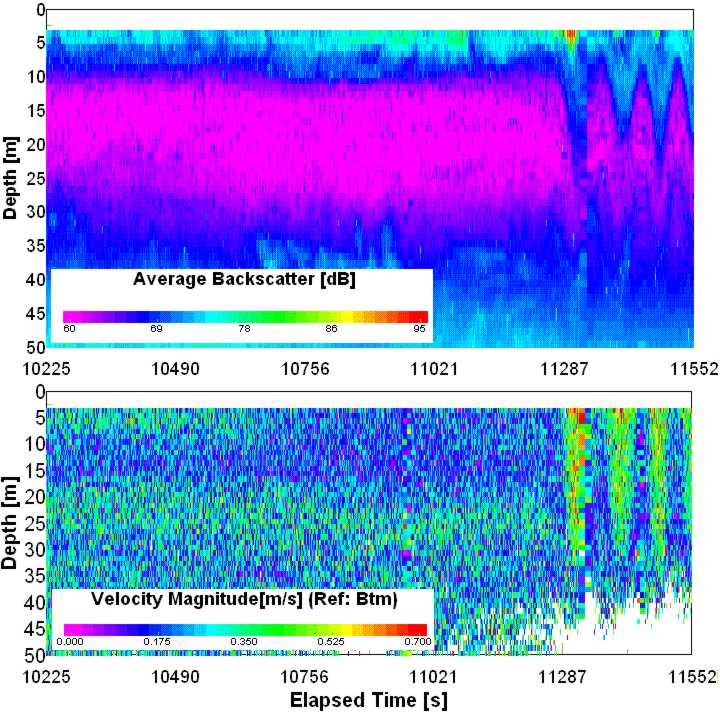In collaboration with Scott Gallager (WHOI) and Alberto Scotti (UNC),
our lab is studying the effects of internal bores and trailing internal
solitary waves on zooplankton distribution. The field component includes
two cruises in Massachusetts Bay, where the internal tidal bores are
highly predictable. The field approach consists of deployment of
moored and towed instrumentation.
Below are (1) interpolated data of backscatter and velocity
magnitude, and (2) a photo of the leading edge of the bore in (1). The
bore is traveling towards the West, presumably from Stellwagen bank to
Scituate, Massachusetts. (Photos and data taken from the RV Connecticut
on 18 September 2001.) The photo was taken about 1:30 h later than the
Doppler current meter data.


Top, interpolated backscatter (top panel) and velocity magnitude
(bottom panel) with depth (m) and time (s) obtained from the shipboard
Doppler current meter. Bin size is 1 m. Boat steaming towards Stellwagen
bank (Massachusetts) at about 3-4 knots. Patterns in backscatter and
velocity magnitude reveal an internal bore followed by internal solitary
waves.11552 s is about 9:11 EDT, 18 Sep 2001.
Bottom, a surface slick associated to the
leading edge of the bore in the panel above observed from the bow of the
RV Connecticut. The photo was taken 91 minutes after 09:11 EDT, 18 Sep
2001. The boat was steaming onshore, in the direction of propagation of
the wave. Click here for
more photos of the cruise.

